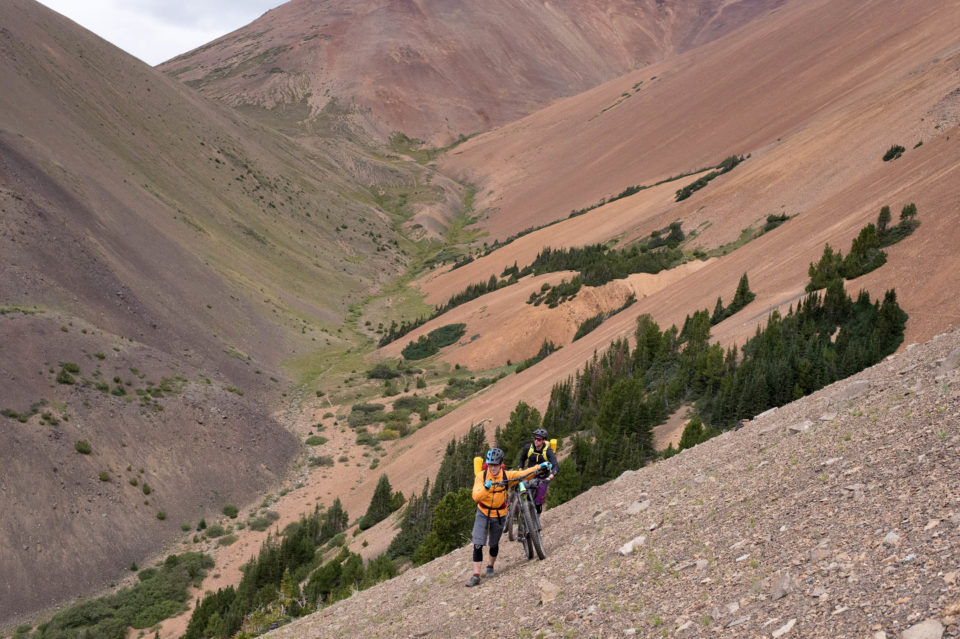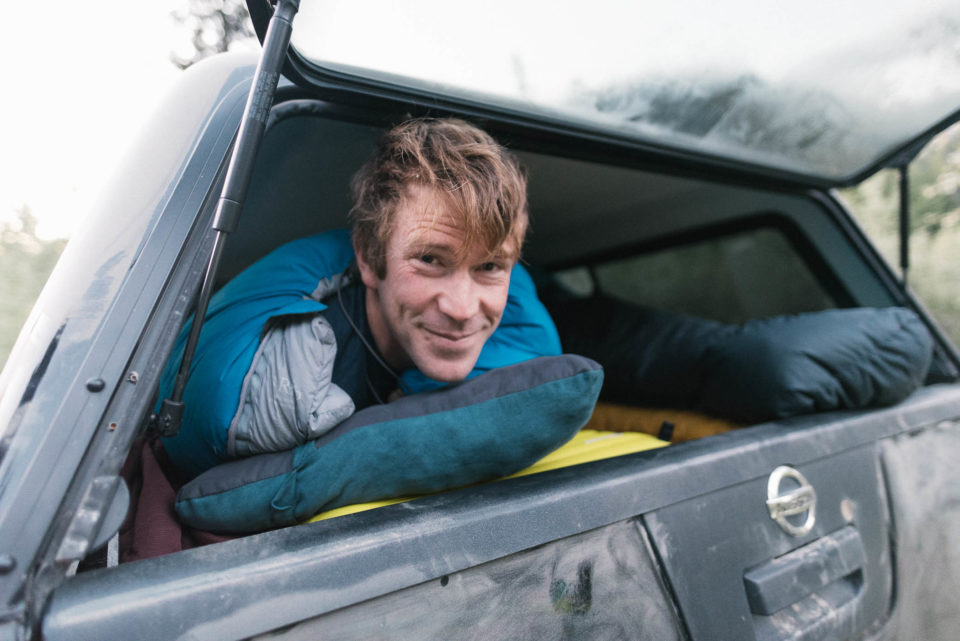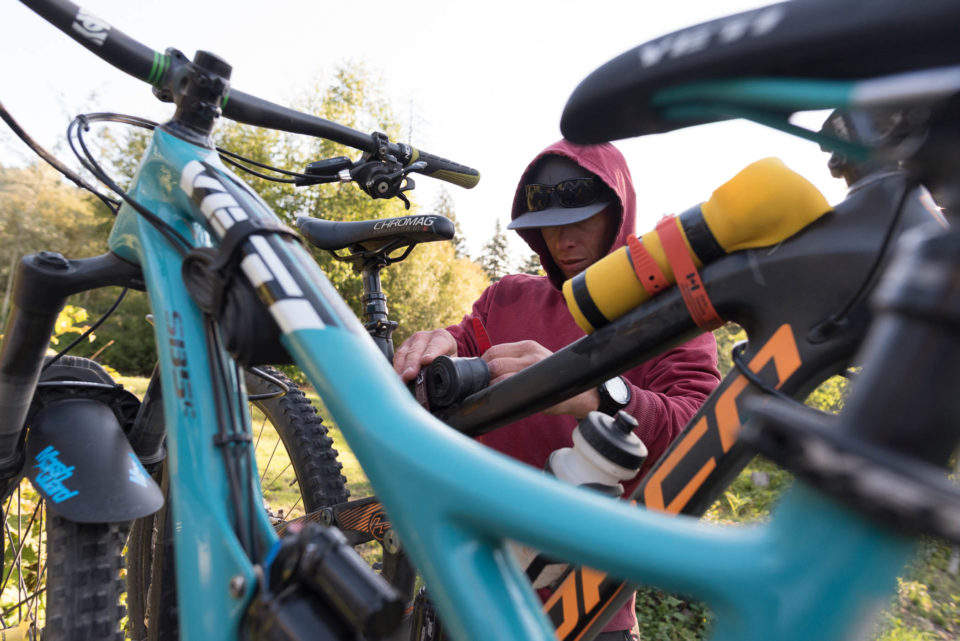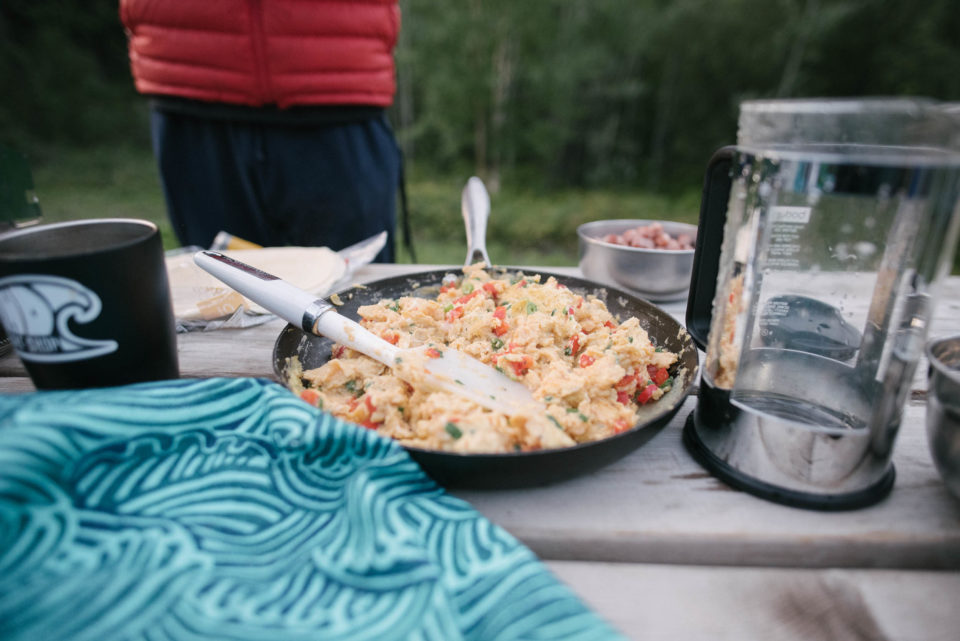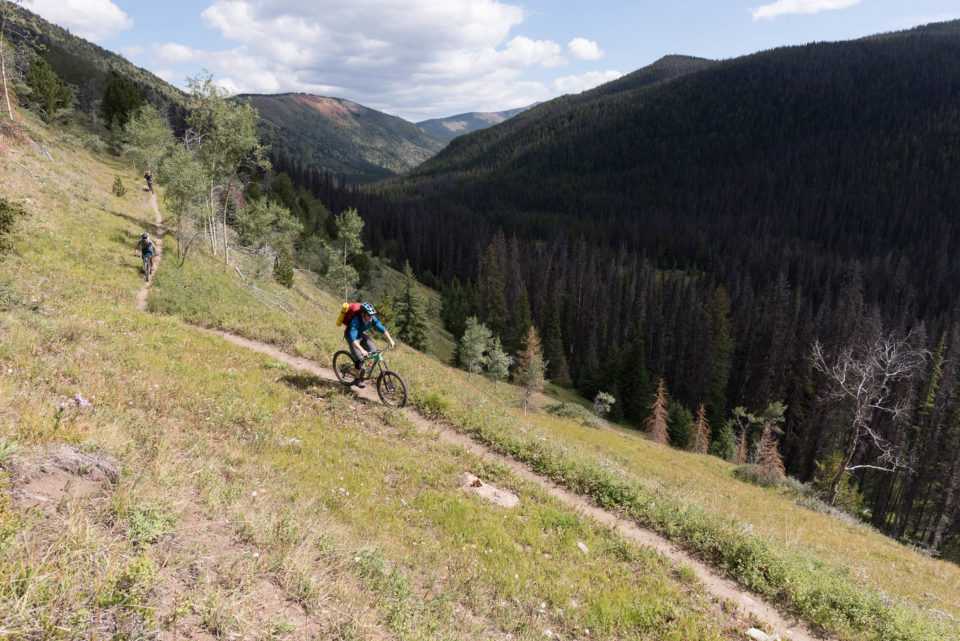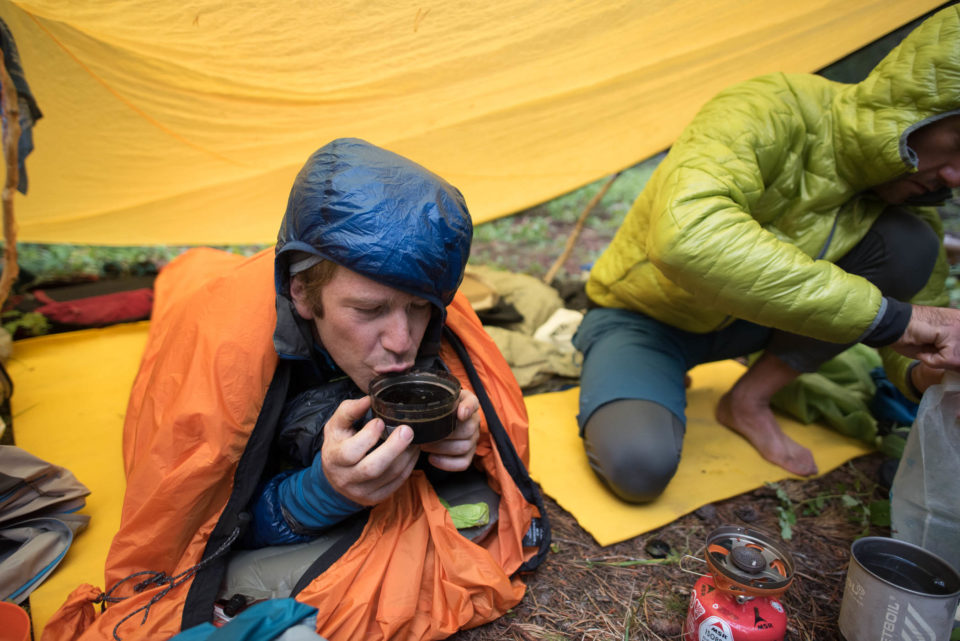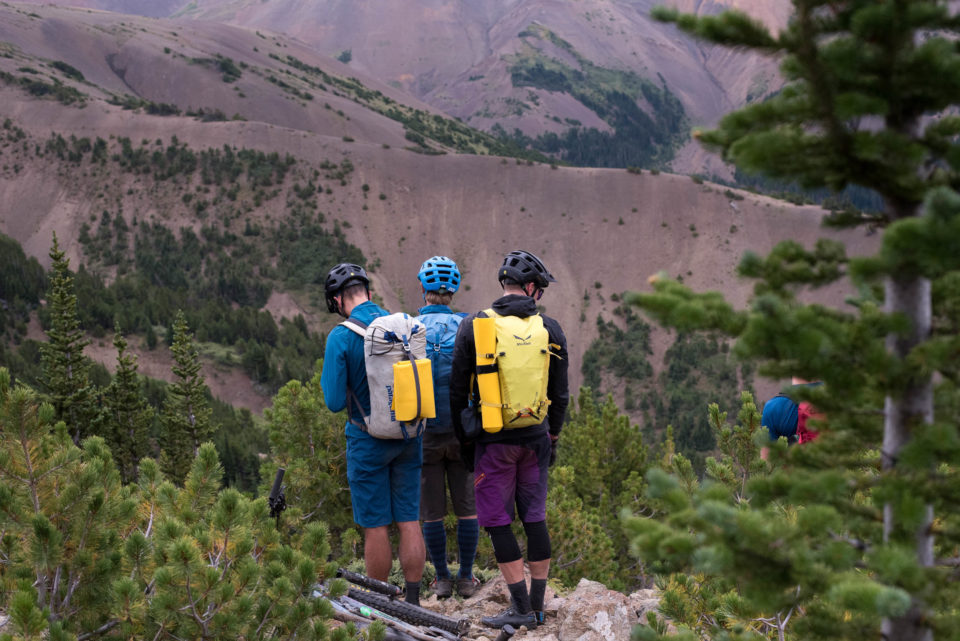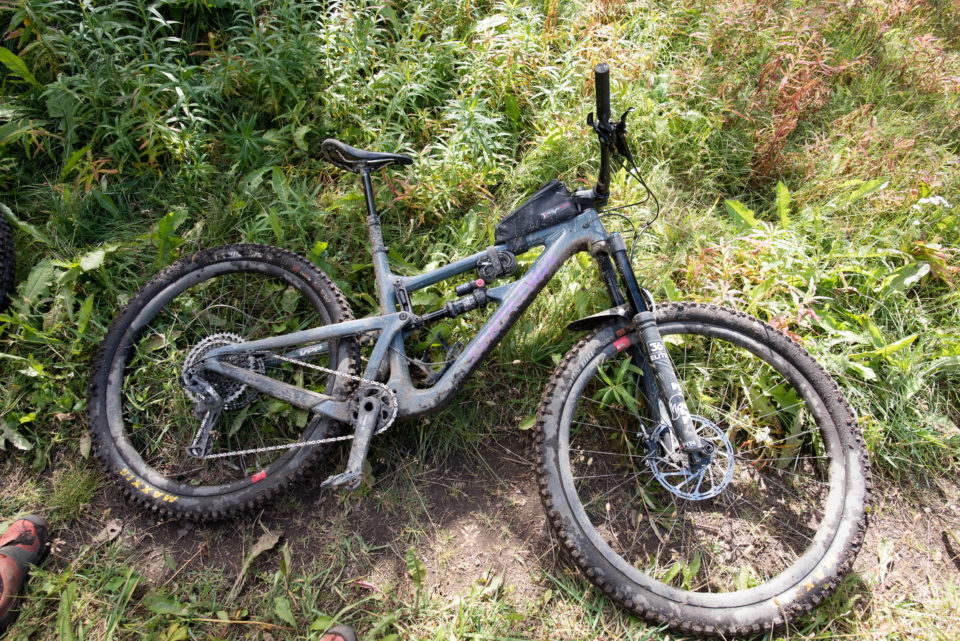The Chilcotin Classic
Share This
Canadian photographer Pat Valade takes us to British Columbia’s South Chilcotin Mountains for a three-day bikepacking trip with a twist. Read on for his account of an ultralight adventure through this legendary range, known among riders for its diverse and challenging terrain…
Words and photos by Pat Valade (@bikestachevalade)
In memory of our dear friend Chris McCrum, a founding member of the Chilcotin Classic and someone who ventured into the region more than 100 times.
The thought that this might end poorly flashed through my mind as I flipped over the bars and landed upside down, elbows first, on an assortment of rocks and debris, my bike landing squarely on top of me. Seconds before, I had been climbing over a few awkwardly shaped rocks when one shifted under my front tire, sending me careening down the wrong side of a steep hill. We’d been riding all day in search of camp, and most of our group was far ahead. Luckily, I avoided any major injuries, save a beating to my ego, and was able to hop back in the saddle, pedals spinning furiously to catch my four companions up ahead. Welcome to the Chilcotins, where the climbs are long, the descents loose, and the landscapes vast and mysterious.
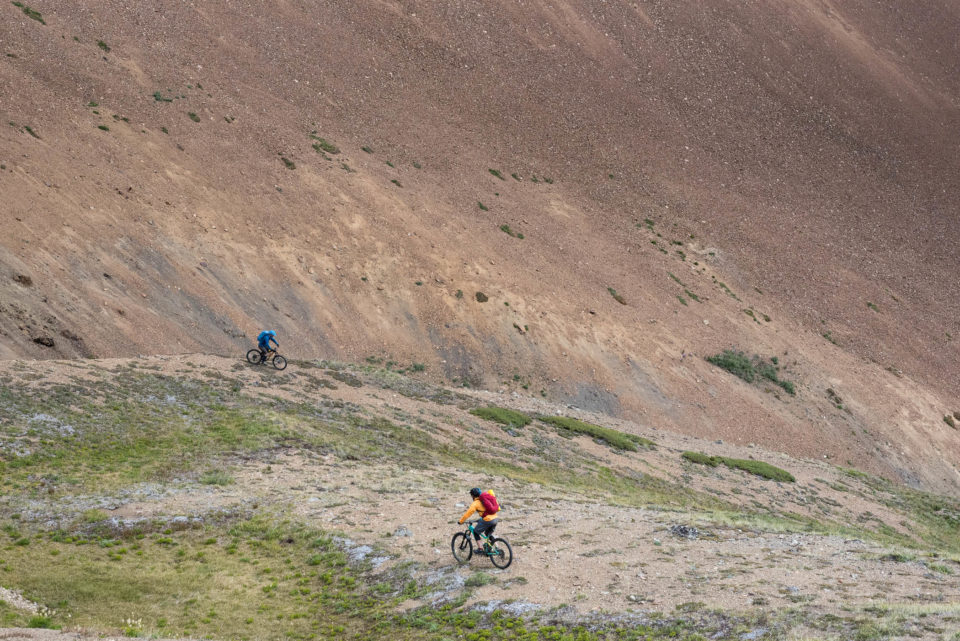
A few days before we were set to leave, I stared at the email my friend and coworker Ross had sent with our itinerary and had to re-read it to make sure I wasn’t missing something, “Day Four: Throw your bike into the sea and take up golf.” My friends have a unique sense of humour, but this had me legitimately worried. I was joining in on a trip that my companions have dubbed “The Chilcotin Classic.” This was the sixth year of this annual ride, one that follows a few distinct principles in “disaster style” bikepacking.
The name of the game is to go as light as possible. Because of the huge variety of riding (by riding I mean amazing descents rudely interrupted by hike-a-bikes up frustratingly loose scree slopes) we were expected to experience on this trip, the goal was to fit everything we needed into a small 20L backpack, with little or nothing attached to our bikes. This is a huge departure from my usual style of bikepacking, which generally involves a fully rigid steel bike (aptly dubbed the garbage-sled) with all manner of gear and accoutrements strapped to every square inch. Slow and heavy is my usual mode of operation, and here I was about to head out with a full-suspension bike and one minuscule backpack. Naturally, as the amateur of the group, I ended up bringing the biggest pack, stuffed with my sleep kit, snacks, group gear, and an equally large and heavy camera.
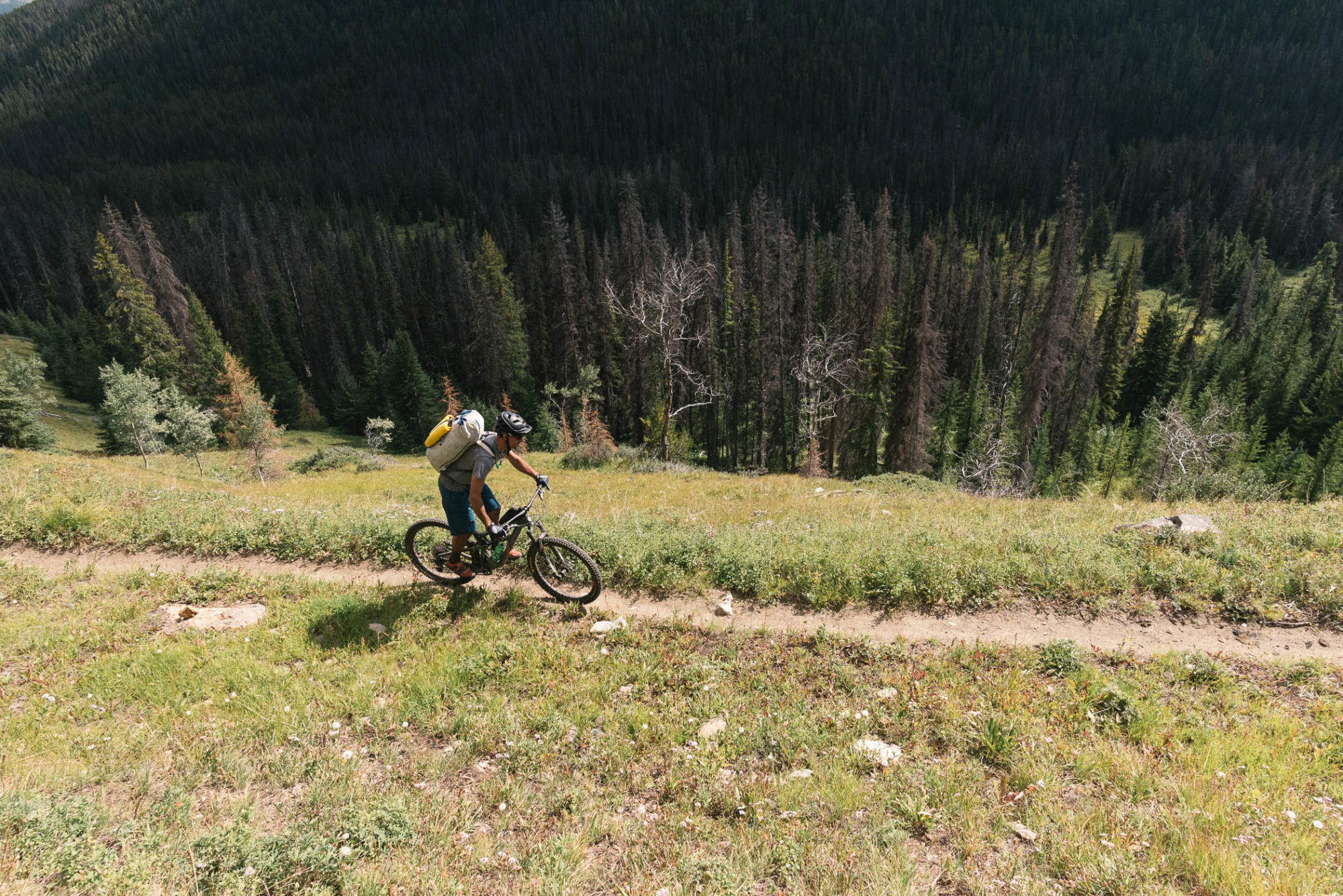
The Chilcotin Region is a landscape of plateaus and mountains sandwiched in between the inland lea of the Coast Mountains and the west side of the Fraser River. It is the land of the Tsilhqot’in and Dakelh peoples, whose roots in the region run deep. The landscape consists of a large, wide plateau, stretching from the mountains to the Fraser River. It includes several fjord-like lakes, the largest being Chilko Lake, which feeds the Chilko River, the main tributary of the Chilcotin River. It holds much room for adventures, with popular zones for mountain biking, fishing, and horse packing, as well as a substantial grizzly bear population.
I encourage anyone travelling to this area to delve into its rich history, one that makes it clear we are only visitors to this land.
It was nearly dark when Ross, Scott, and I rolled into the campground at Tyax Lodge, pitched our tents, and wolfed down some grocery store sandwiches and a few beverages of the frosty variety before settling in and pulling out the maps. I’d done a little research of where we were riding beforehand, but poring over the maps lit by the light of our headlamps, I felt those familiar flutters in my stomach. It’s always so exciting, and also slightly frightening to be riding bikes in new places. Luckily, my friends were quite experienced travellers in this area. As we turned in for the night, we were interrupted by the bright headlights of a truck containing the remainder of our motley crew, Julian and Chris, arriving from Vancouver after a late workday. A not-too-early alarm led us to variety of breakfast burritos and coffees professionally prepared by our resident chef, Ross. I can’t think of a better way to start a trip.
As we split up group gear and went through final packing lists, I quadruple checked that I had my share of our kit before leaving behind any extra things as we shuttled the cars down the logging road to the start of our route. No matter the terrain, I feel like the energy and excitement of a new trip always propels me quickly through the first kilometres of a ride. Your pack doesn’t feel heavy, the bike doesn’t squeak or protest, and the jokes flow. Then, reality slams into you in the form of a steep, rutted out logging road in the blazing sun. This is when I start to feel less and less like I’m in good shape, but still attempt to grind it out so I’m not the first person who hops off and walks my bike.
Figuring this is a low judgment scenario, I jump off my bike anyway and start pushing. We’ve got a lot of steep climbs, and a lot of riding ahead. Probably best to conserve a little energy, right? An ego is heavy, anyway, and it was taking up space in my overstuffed backpack.
What followed was a blur of some of the most varied riding I’ve ever done. Riding and snacking was the routine. I had relied too heavily on a selection of “meat bars” and was already tiring of them. We bombed up and down a few logging roads, and it was clear that we were going to get muddy and wet on this trip. Creek crossings and marshes became normal, and we had some excellent singletrack climbing up and down through a valley as we approached our first camp. As the newbie, there wasn’t as much pressure for me to help navigate (thanks guys) and I was able to concentrate on riding, shooting, and, of course, feeling sorry for myself on occasion.
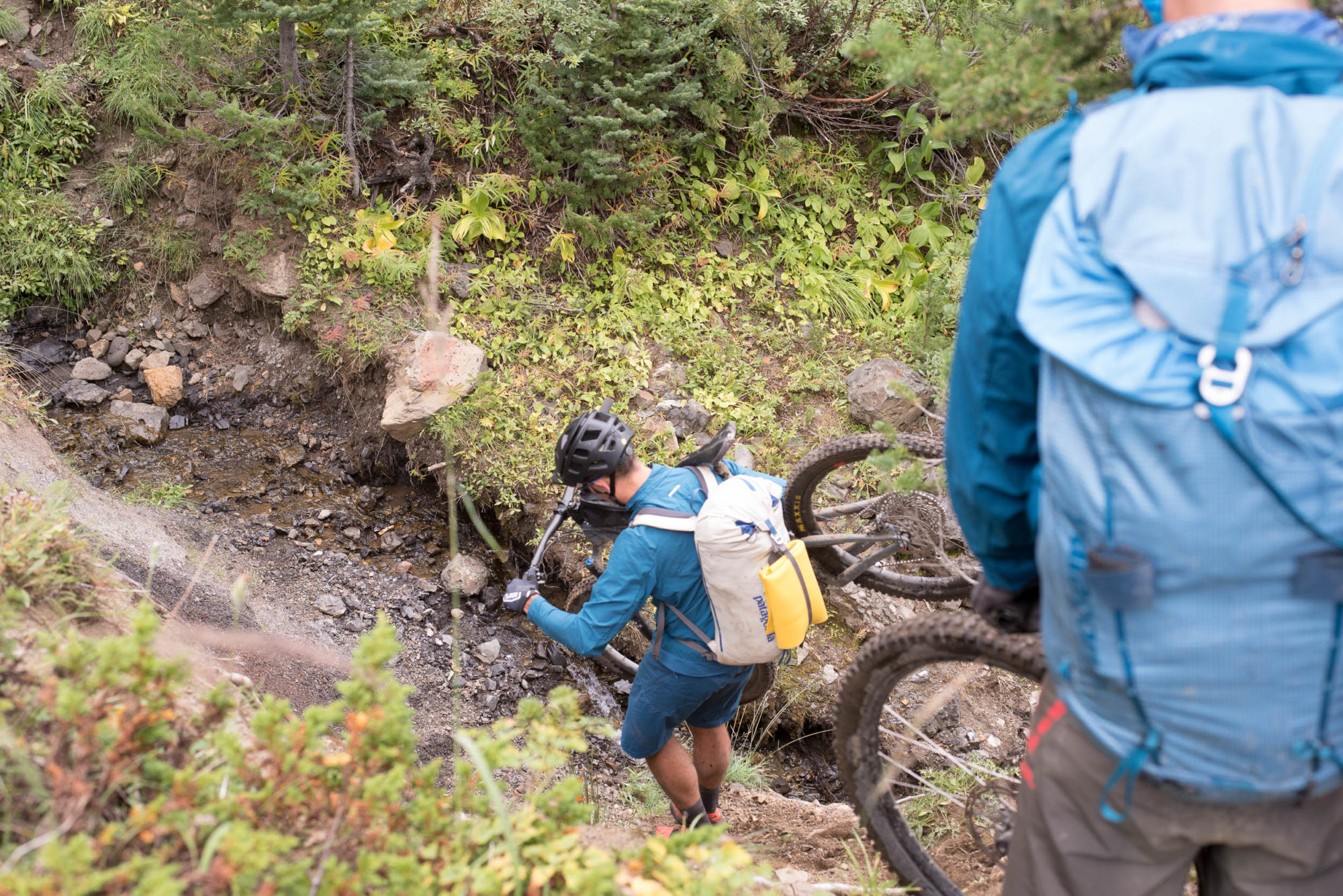
Our light camp setup was perfect. Two sil-tarps lashed at an angle, and everyone lined up in bivy sacks like sardines, as far from the edge of the tarps as we could get. The sun quickly set as we all wolfed down bagged meals, swapped a few classic tales, and turned in for the night. Our only evening mishap was a case of mistaken identity when someone got up to answer nature’s call, and was immediately mistaken for a bear. Luckily for them the bear spray wasn’t close at hand.
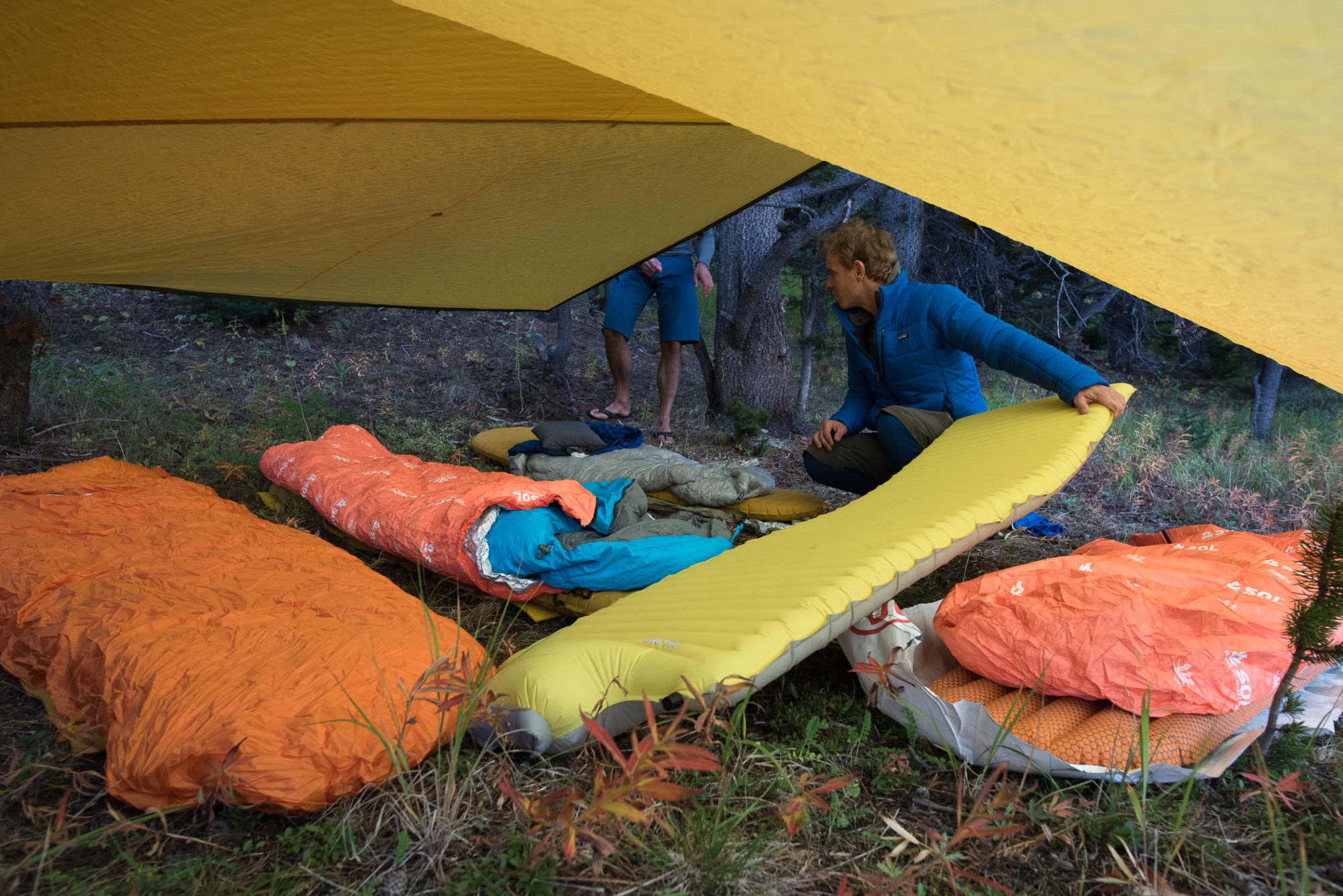
We stopped for lunch before our first big climb over a pass, and I noticed something seemed quite odd. I once read an article titled “7 Chamois Mistakes That Ruin Rides” on Bicycling.com, but they never mentioned in this list that putting your short liner on backwards is the quickest way to an unpleasant experience. When you’re lacking sleep and slipping on a liner that is both freezing and moist, the worst can happen. Unfortunately for me there was nowhere I could subtly correct this mistake, so I loudly confessed my dire predicament to the group went about taking care of it. One thing I always learn on rides like this is how to fix problems, even awkward ones, and keep riding.
I’ve found that I almost always get into a rhythm by the second day of a ride. This time, I came to understand that riding in the Chilcotins has a distinct pattern. The descents are fast, fun, and rowdy. As soon as you get down them, you hop of the bike in one quick motion and are pushing, loose scree crunching under your shoes, as you shift the weight of the bike from pushing, to lifting, to dragging up high mountain passes, and hopefully towards the next descent.
The landscape of the Chilcotins is unique. The ridgetops are bare, rocky, and windy, with only moss and tufts of grass growing. Through the vast, rolling landscape, the geological time scale becomes increasingly obvious, as layers upon layers present themselves, carved by glaciers and wind, occasionally exposing steep cliffs that pose navigational challenges.

From these ridges you drop, seemingly endlessly, into steep valleys carved by water like a scalpel through clay. Things turn greener, the trees grow taller, and suddenly you’re snaking your way through thick undergrowth as it grabs and pulls at your pedals, your bars, and your limbs. Before you know it, you can’t spin the pedals, and you’re pushing again, the familiar weight of the bike pushing against your palms.
All total, this was a short ride, just two nights and three days with a few friends and some small packs. It falls short compared to full-on expedition rides in terms of actual days and logistics. No planes, no trains, no disassembling or assembling bikes, no resupply stops or cheat days in motels. I often wonder what I’ve learned through experiences on rides like this, the ones that are long enough to get you out of the office and shake the normality of everyday life from your limbs, but really only occupy the space of a weekend.
I always feel privileged and lucky that I live where I do, and that I have the opportunity to go on trips like this. It’s easy to get bogged down in the latest bikes, parts, or trips that someone else has or is doing. But through the simple spinning of the pedals, even if you can gain just a little insight into yourself or the world around you, it’s worth every bit of the pushing (and the wet shorts).
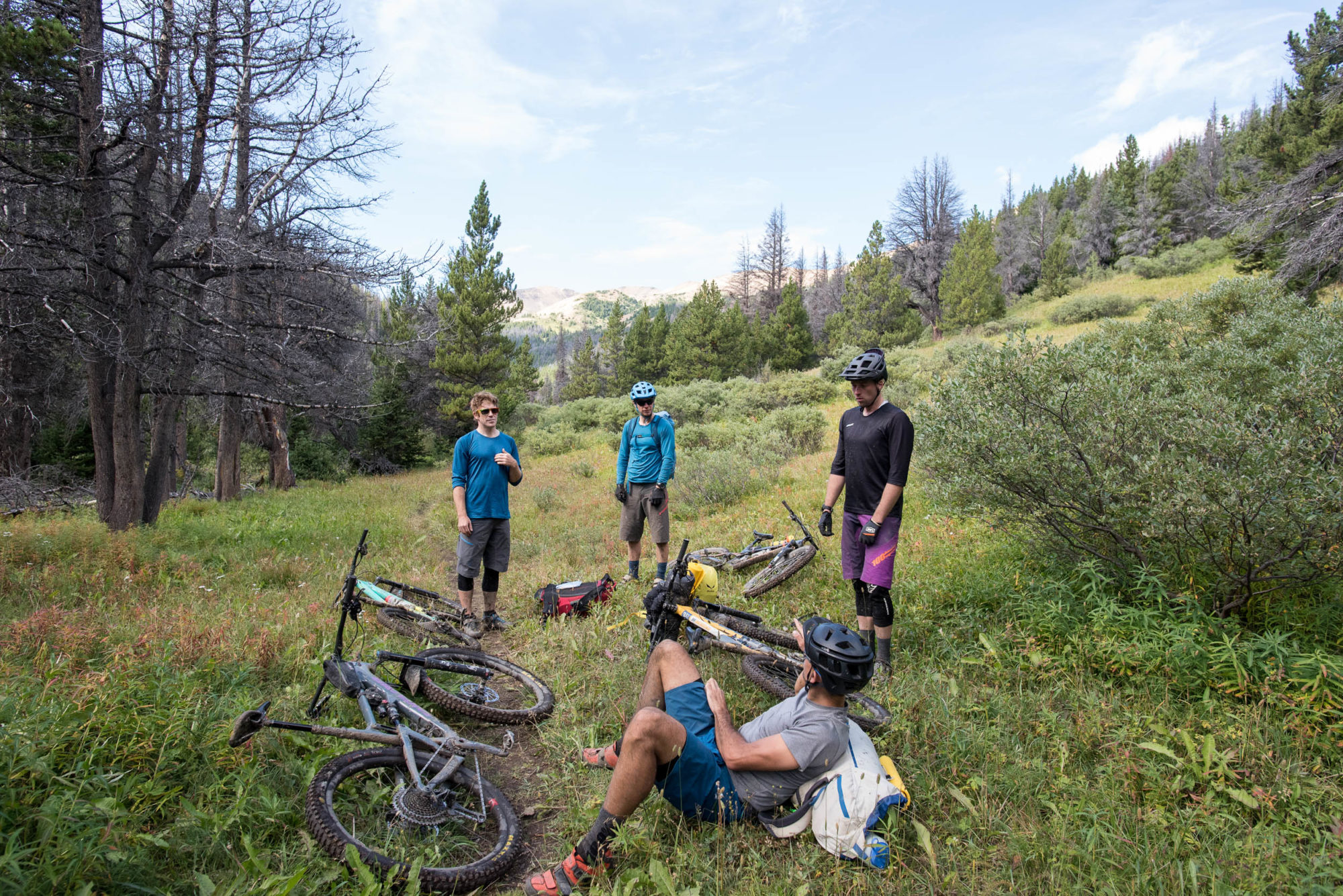
Note: I have purposefully left out details of our exact location in the Chilcotins. I hope this encourages people to put in the time to explore this wonderful place themselves, respecting the landscape and a tradition for exploring. As the newest member on this annual trip, I want to respect the time and effort my companions put in over five years to find some wonderful riding that is slightly off the beaten path in the Chilcotins. I’m happy to answer any specific questions about the ride personally. If you’re looking for a readymade bikepacking route in the Chilcotins, you can find one here.
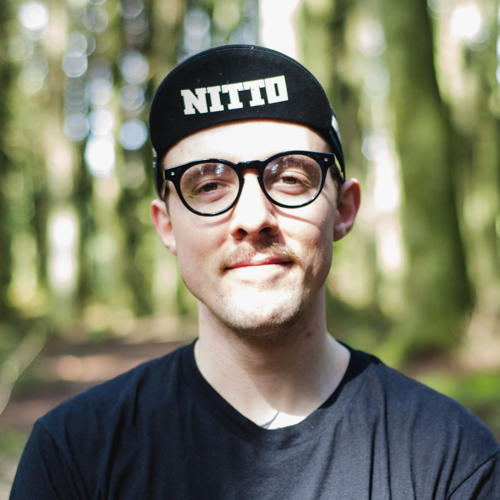
About Pat Valade
Pat Valade is a photographer based on the West Coast of British Columbia. He grew up riding mountain bikes in the dry interior of the province, and now mostly just rides bikes in the rain. You can often find him getting lost on some trail, on skis, on the end of a rope, or consuming an ill-advised amount of coffee and pastries while running around with a camera. Find Pat on Instagram @bikestachevalade.
Please keep the conversation civil, constructive, and inclusive, or your comment will be removed.












